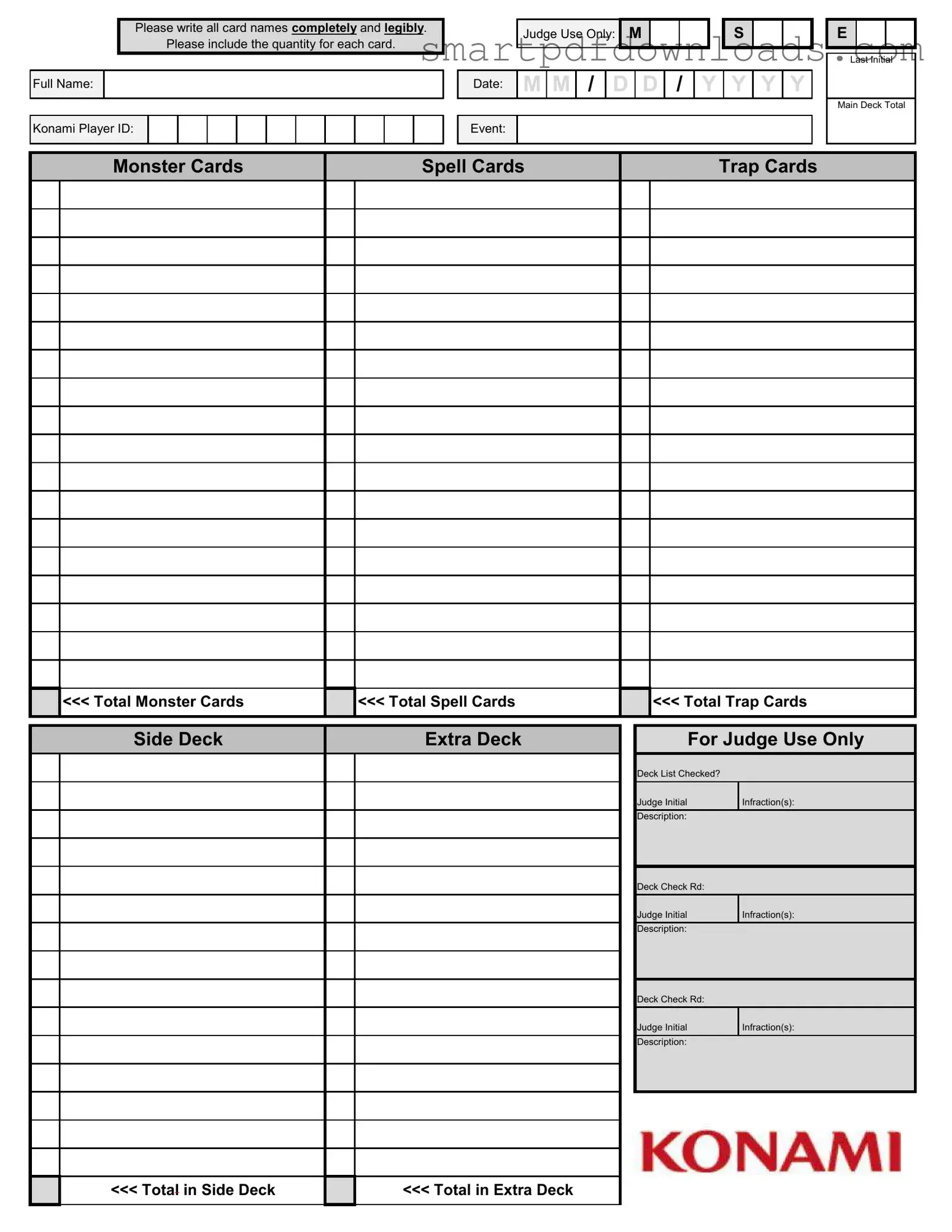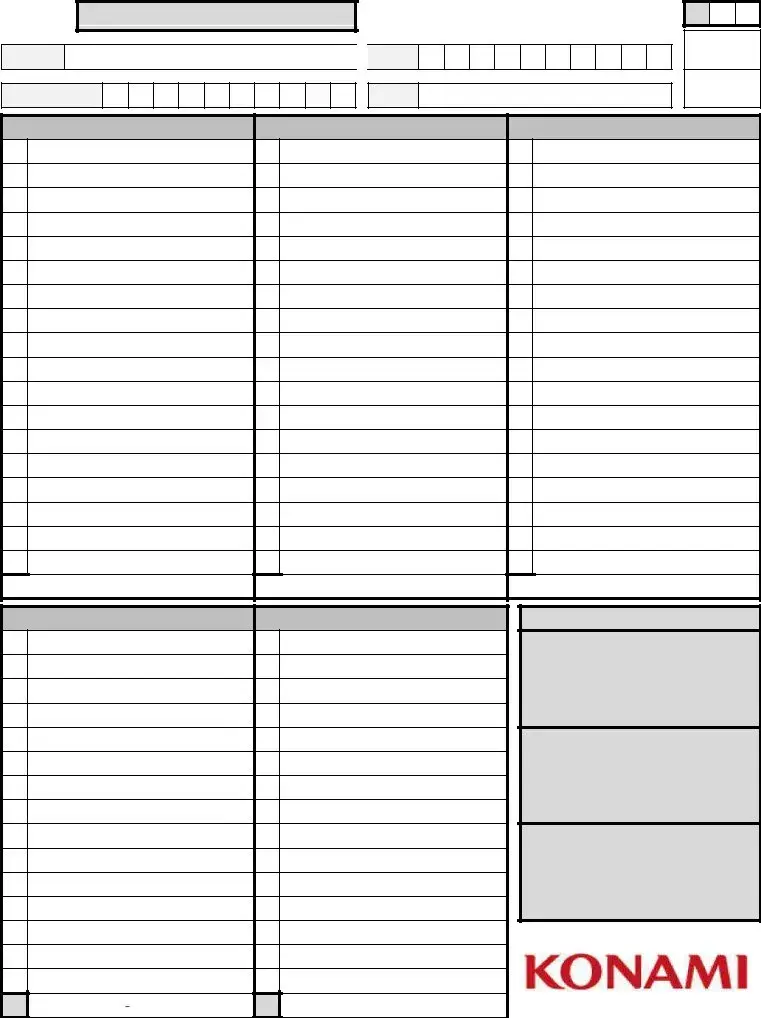Konami Decklist Form
The Konami Decklist form is a crucial document used in competitive trading card games, specifically designed to ensure that players accurately report their decks. This form requires participants to list card names clearly, specify quantities, and provide personal details such as their full name and player ID. By meticulously documenting each card, players help maintain the integrity of the event and facilitate smooth tournament operations.
Edit Konami Decklist Online




 <<< Total Monster Cards
<<< Total Monster Cards <<< Total Spell Cards
<<< Total Spell Cards <<< Total Trap Cards
<<< Total Trap Cards